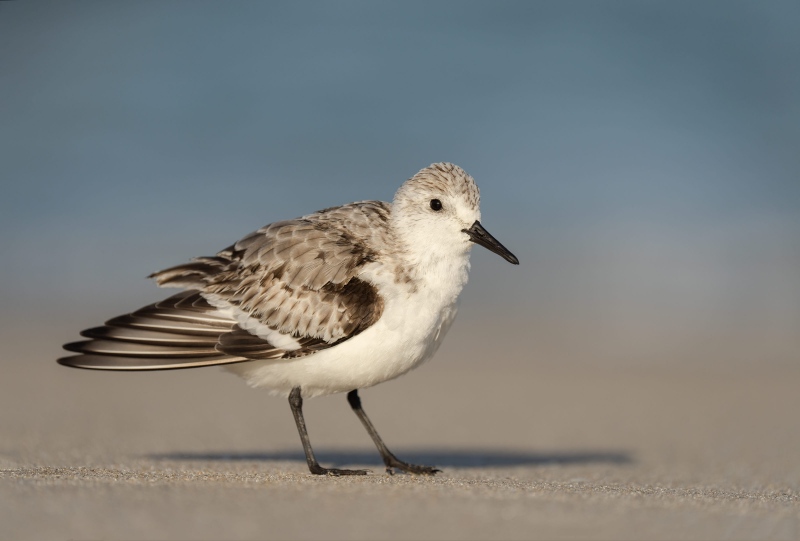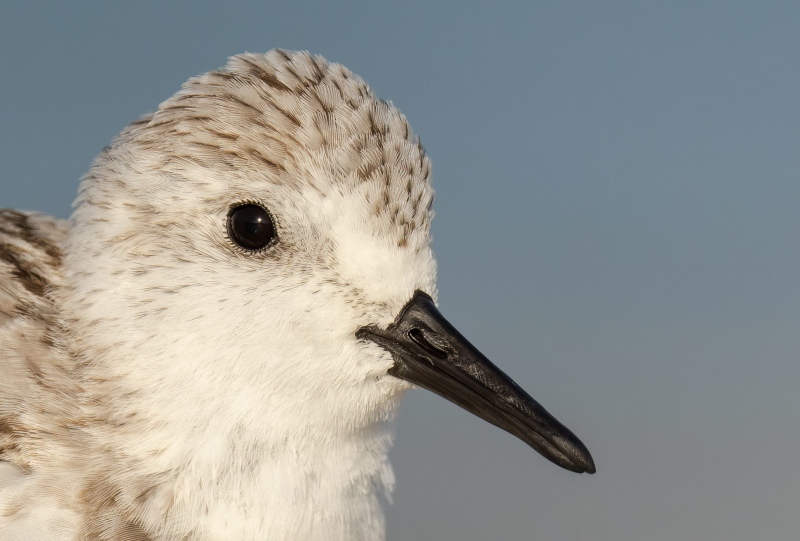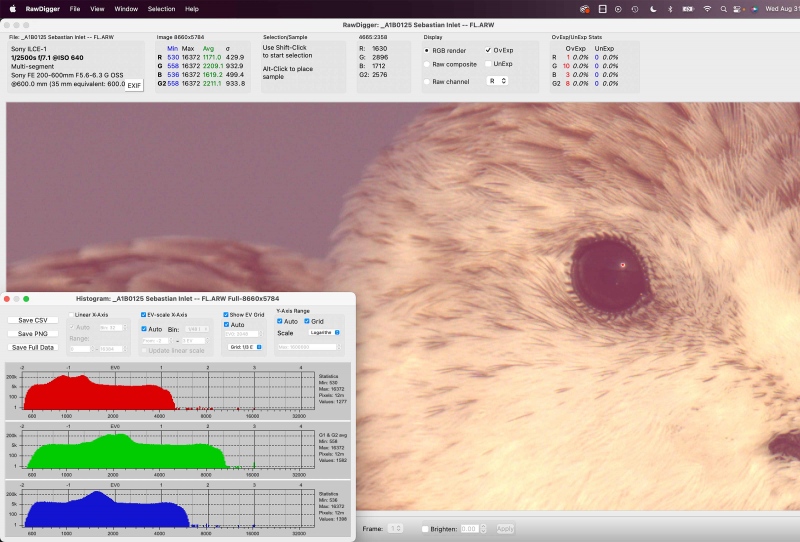What’s Up?
I was in the car headed south at 4:15am on Wednesday morning. I made lots of pit stops along the way to rest and to get some work done. It’s amazing that you can set up an office in most McDonald’s for the price of a small cup of coffee. I finally made it to the Lorton, VA Amtrak Auto Train station at 2:00pm and boarded at 3:30. We departed on time.
I was thrilled to learn on Wednesday that a1 Group member Barbara White is signing up for the second San Diego IPT. With the 2023 voyage sold out, I am looking seriously at another Galapagos Photo-Cruise of a Lifetime, July 30 to August 13, 2024 (on the boat). If you are seriously interested, please let me know via e-mail. I will need ten deposits by the end of this year so please do not tarry if you would like to go.
Today is Thursday 1 September 2022. We should be arriving at the Sanford FL station at about 9:00am. I should be back home around lunchtime today. All in all, it was a great trip. I will begin working on my 2021 tax return on Friday 🙂 Wherever you are, and whatever you are doing, I hope that you too have a great day. This blog post took about an hour to prepare and makes one hundred sixty days in a row with a new one.
Please remember to use the B&H and Amazon links that are found on most blog pages and to use the BIRDSASART discount code at checkout when purchasing your new gear from Bedfords to get 3% back on your credit card and enjoy free second-day air FedEx. Please, also, consider joining a BAA IPT. You will be amazed at how much you will learn!
|
|
|
I created this image on 29 October 2021 at Sebastian Inlet, FL. I used the handheld/knee-podded Sony FE 200-600mm f/5.6-6.3 G OSS lens (at 600mm) and The One, the Sony Alpha 1 Mirrorless digital camera. ISO 640. Exposure determined via Zebras with ISO on the rear dial: 1/2500 sec. at f/7.1 (stopped down 1/3 stop) in Manual mode. RawDigger showed that this image exposure was 1/3-stop from being perfect; the 22 Ov-Exp pixels were in the specular highlight in the bird’s eye. AWB at : 5:06:20 pm on dead-clear afternoon. Tracking: Zone/AF-C Bird/Eye Detection AF was active at the moment exposure and performed perfectly. Click on the image to view a hi-res version. Image #1: Sanderling — adult molting to basic (winter) plumage
|
Birds on Berms
I am always on the lookout for birds perched on the edge of a berm or any type of ridge. Why? Getting low in these situations will yield spectacular backgrounds, in this case, the Atlantic Ocean. Would this image have been better or worse if I got even? Why or why not?
The subject in today’s featured images was ruffling its feathers at the moment of exposure. The relatively fast shutter speed of 1/2500 second was more than enough to freeze the action. With the sun coming over my left shoulder, the 4-degree head turn toward us was perfect.
|
|
Image #1A: An unsharpened 100% crop of the Sanderling — adult molting to basic (winter) plumage image |
Actually Funny
I chuckle when folks ask me how much sharper the Sony 600mm f/4 GM (Grand Master) lens is than the 200-600 G lens (at 1/6 the cost). As far as I can determine by evaluating the images on my M1 MacBook Pro, the honest answer is, “It ain’t.” Enlarge the screen capture and check out the sharpness of the eye skin and the tiny feathers encircling it, the one’s that give the appearance of eyelashes. When those eyelashes appear laser sharp, you have created a very sharp image. And the image quality ain’t bad either.
Is the SONY 1/200-600 G Lens/SONY Alpha 1 Combo Right for You?
If you are interested in a relatively lightweight, hand hold-able for most, super-sharp, astoundingly versatile rig that is the world’s best hand holdable rig for photographing birds in flight and in action, I would have to answer yes. Use my B&H links above or go with Bedfords to save 3% and enjoy free second day air shipping and you earn a free pass into my Sony Alpha 1 Info and Updates e-mail group. Both items were hard to get for a long time, but the pipeline has opened. Yikes, I forgot to mention 30 fps and the superb performance with the 1.4X teleconverter.
|
|
Image #1B: The RawDigger screen capture for the Sanderling — adult molting to basic (winter) plumage image |
The RawDigger Adapted (pink) Histogram
In the RawDigger e-Guide, you will learn exactly how to set up the Adapted “pink” RawDigger Histogram and how to use it to quickly and easily evaluate the exposure or raw file brightness of images from all digital cameras currently in use. RawDigger was especially helpful to me as I have struggled with Canon R5 exposures and learned my new camera body, the Sony Alpha a1.
The adapted histogram for today’s featured images shows that a bit less than another 1/3-stop of light would have yielded a perfect exposure. The 22 OvExp pixels (out of 51 million) are all in the specular highlight in the eye, the much beloved catchlight. As the spectral highlights are reflections of the sun, you always want them to show as over-exposed. If not, your image will be many stops too dark.
Ho Hum, Another (Almost) Perfect Exposure
What can I say? The combination of Zebras live in the viewfinder (with your camera set up properly) and post-capture study of the raw files in RawDigger makes it pretty much child’s play to come up with perfect exposure after perfect exposure. It would be impossible to overstate how much I have learned by studying RawDigger and how much better my exposures have become since I started with the program almost two years ago. The raw file brightness for today’s featured image is perfect with the G channel almost making the 16000 line. In other words, the raw file brightness is perfect.
RawDigger — not for the faint of heart …
Nothing has ever helped me learn to create perfect exposures to the degree that RawDigger has. I think that many folks are reluctant to learn that most of their images are underexposed by one or more full stops and that highlight warnings in Photoshop, Lightroom, Capture One, and your in-camera histogram are bogus as they are based on the embedded JPEGs. Only your raw files tell the truth all the time. Heck, I resisted RawDigger for several years … Once you get over that feeling, RawDigger can become your very best exposure friend no matter what system you are using. On the recent IPTs and In-the-Field sessions, we have demonstrated that fact. Convincingly.
|
|
RawDigger e-Guide with Two Videos |
The RawDigger e-Guide with Two Videos
by Arthur Morris with Patrick Sparkman
The RawDigger e-Guide was created only for serious photographers who wish to get the absolute most out of their raw files.
Patrick and I began work on the guide in July 2020. At first, we struggled. We asked questions. We learned about Max-G values. We puzzled as to why the Max G values for different cameras were different. IPT veteran Bart Deamer asked lots of questions that we could not answer. We got help from RawDigger creator Iliah Borg. We learned. In December, Patrick came up with an Adapted Histogram that allows us to evaluate the exposures and raw file brightness for all images created with all digital camera bodies from the last two decades. What we learned each time prompted three complete beginning to end re-writes.
The point of the guide is to teach you to truly expose to the mega-Expose-to-the-Right so that you will minimize noise, maximize image quality, best utilize your camera’s dynamic range, and attain the highest possible level of shadow detail in your RAW files in every situation. In addition, your properly exposed RAW files will contain more tonal information and feature the smoothest possible transitions between tones. And your optimized images will feature rich, accurate color.
We teach you why the GREEN channel is almost always the first to over-expose. We save you money by advising you which version of RawDigger you need. We teach you how to interpret the Max G values for your Canon, Nikon, and SONY camera bodies. It is very likely that the Shock-your-World section will shock you. And lastly — thanks to the technical and practical brilliance of Patrick Sparkman — we teach you a simple way to evaluate your exposures and the raw file brightness quickly and easily the Adapted RawDigger histogram.
The flower video takes you through a session where artie edits a folder of images in Capture One while checking the exposures and Max-G values in RawDigger. The Adapted Histogram video examines a series of recent images with the pink histograms and covers lots of fine points including and especially how to deal with specular highlights. The directions for setting up the Adapted Histogram are in the text.
If we priced this guide based on how much effort we put into it, it would sell it for $999.00. But as this guide will be purchased only by a limited number of serious photographers, we have priced it at $51.00. You can order yours here in the BAA Online Store.
|
Fort DeSoto in fall is rife with tame birds. All the images on this card were created at Fort DeSoto in either late September or very early October. I hope that you can join me there this fall. Click on the composite to enjoy a larger version. Clockwise from upper left to center: Long-billed Curlew, Marbled Godwit, Caspian Tern, Great Egret, Sandwich Tern with fish, Willet, Black-bellied Plover threat display, Snowy Egret, 2-year old Yellow-Crowned Night-Heron, juvenile Yellow-Crowned Night-Heron. |
The Fall 2022 Fort DeSoto Instructional Photo-Tours
Fall 2022 Fort DeSoto Instructional Photo-Tour #1
3 1/2 Days: Tuesday 27 September through the morning session on Friday 30 September 2022. $1899.00 includes three working lunches. Limit six photographers/Openings five.
Fall 2022 Fort DeSoto Instructional Photo-Tour #2
3 1/2 Days: 7 October through the morning session on Monday 10 October 2022. $1899.00 includes three working lunches. Limit six photographers.
Fall 2022 Fort DeSoto Instructional Photo-Tour #3
3 1/2 Days: Monday 31 October through the morning session on Thursday 3 November 2022. $1899.00 includes three working lunches. Limit six photographers.
Fort DeSoto, located just south of St. Petersburg, FL, is a mecca for migrant shorebirds and terns in fall. There they join hundreds of egrets, herons, night-herons, and gulls that winter on the T-shaped peninsula. With any luck at all, we should get to photograph one of Florida’s most desirable shorebird species: Marbled Godwit. Black-bellied Plover and Willet are easy, American Oystercatcher is pretty much guaranteed. Great Egret, Snowy Egret, Great Blue Heron, Tricolored Heron, and White Ibis are easy as well and we will almost surely come up with a tame Yellow-crowned Night-Heron or two. And we will get to do some Brown Pelican flight photography. In addition, Royal, Sandwich, Forster’s, and Caspian Terns will likely provide us with some good flight opportunities as well. Though not guaranteed, Roseate Spoonbill and Wood Stork might well be expected. And we will be on the lookout for a migrant passerine fallout in the event of a thunderstorm or two.
On this IPT, all will learn the basics and fine points of digital exposure. Nikon and Canon folks will learn to get the right exposure every time after making a single test exposure, and SONY folks will learn to use Zebras so that they can be sure of making excellent exposures before pressing the shutter button. Everyone will learn how to approach free and wild birds without disturbing them, to understand and predict bird behavior, to identify many species of shorebirds, to spot the good situations, to choose the best perspective, to see and understand the light, and to design pleasing images by mastering your camera’s AF system. Most importantly, you will surely learn to evaluate wind and sky conditions and understand how they affect bird photography. And you will learn how and why to work in Manual mode (even if you’re scared of it). The best news is that you will be able to take everything you learn home with you so that you will be a better photographer wherever and whenever you photograph.
There will be a Photoshop/image review session during or after lunch (included) each full day. That will be followed by Instructor Nap Time.
These IPTs will run with only a single registrant (though that is not unlikely to happen). The best airport is Tampa (TPA). Once you register, you will receive an e-mail with Gulfport AirBnB information. If you register soon and would like to share an AirBnB with me, shoot me an e-mail. Other possibilities including taking a cab to and from the airport to our AirBnB and riding with me. This saves you both gas and the cost of a rental car.
A $600 deposit is due when you sign up and is payable by credit card. Balances must be paid by check two months before the trip. Your deposit is non-refundable unless the IPT sells out with six folks, so please check your plans carefully before committing. You can register by calling Jim or Jennifer during weekday business hours at 863-692-0906 with a credit card in hand, or by sending a check as follows: make the check out to: BIRDS AS ART and send it via US mail here: BIRDS AS ART, PO BOX 7245, Indian Lake Estates, FL 33855. You will receive a confirmation e-mail with detailed instructions, clothing, and gear advice. Please shoot me an e-mail if you plan to register or if you have any questions.
|
Clockwise from upper left to center: Long-billed Curlew, juvenile Tricolored Heron, Marbled Godwits, Great Blue Heron, juvenile Pectoral Sandpiper, Wood Stork, smiling Sea Scallop, Ruddy Turnstone scavenging needlefish, Great Blue Heron sunset silhouette at my secret spot, and southbound migrant tern flock blur. |
Up Early, Stay Out Late!
Obviously, folks attending an IPT will be out in the field early and stay late to take advantage of the sweetest light and sunrise and sunset colors (when possible). The good news is that the days are relatively short in early fall. I really love it when I am leaving the beach on a sunny morning after a great session just as a carful or two of well-rested photographers are arriving. The length of cloudy morning sessions will often be extended. Click on the composite to enjoy a larger version.
Typos
With all blog posts, feel free to e-mail or to leave a comment regarding any typos or errors.




















>> It’s amazing that you can set up an office in most McDonald’s for the price of a small cup of coffee. <<
Did you order it as the "senior coffee? "
No, Dino-Man, I did not. I was feeling a bit guilty.
with love, artie
Must be a lot of sample variation because my 200-600mm at anything over 500mm is nowhere near as sharp as my 600mm. It is so poor I don’t really use it as I can’t stand the drop in quality.
Hey Dave, There are some bad copies of the lens out there. Best to try to get it replaced. A friend had one worse than yours and thought it was the lens. I told him to get it replaced. He did. And now he loves it. He is a highly skilled photographer: Arash Hazeghi. He shoots both the 600mm f/4 and the 200-600. You can see his work in the Avian Gallery on BPN.
with love, artie
If you went even a tiny bit lower you’d lose the feet. I like how the feet are perfectly placed between the OOF shadow and OOF foreground strip of sand. Any higher or lower would lose that.
Thanks Pugs. You’ve got good eyes 🙂
with love, a